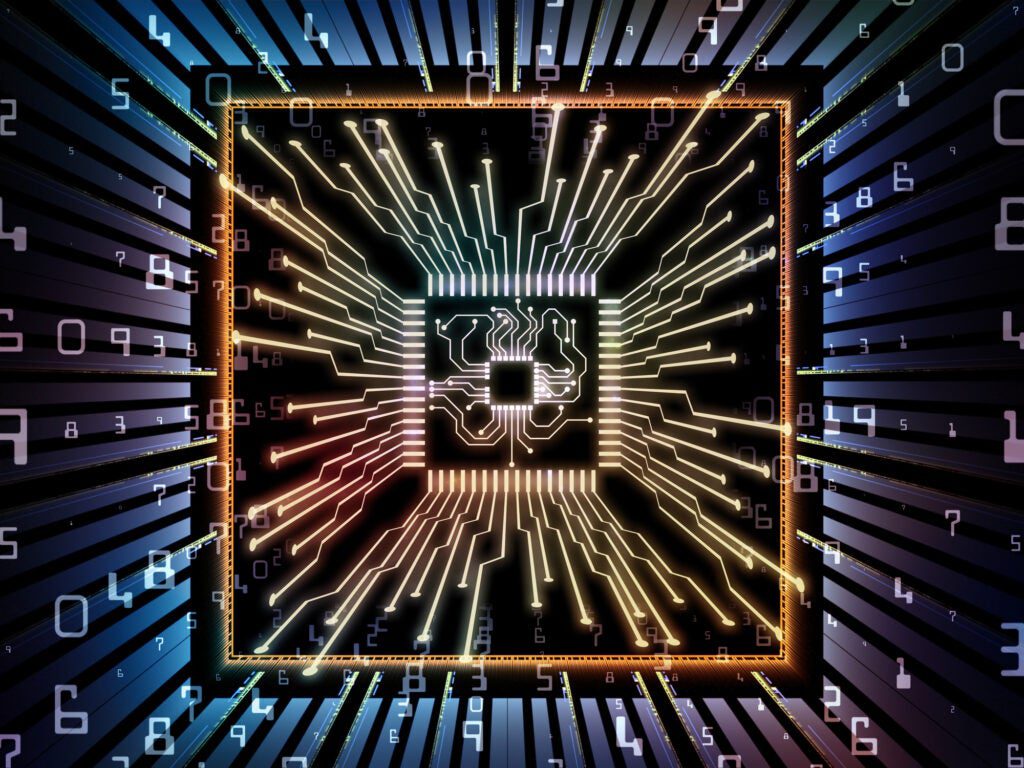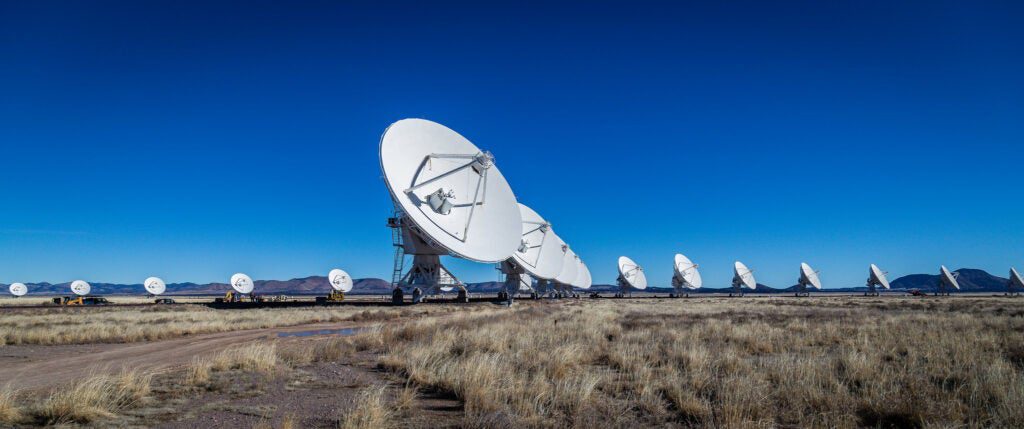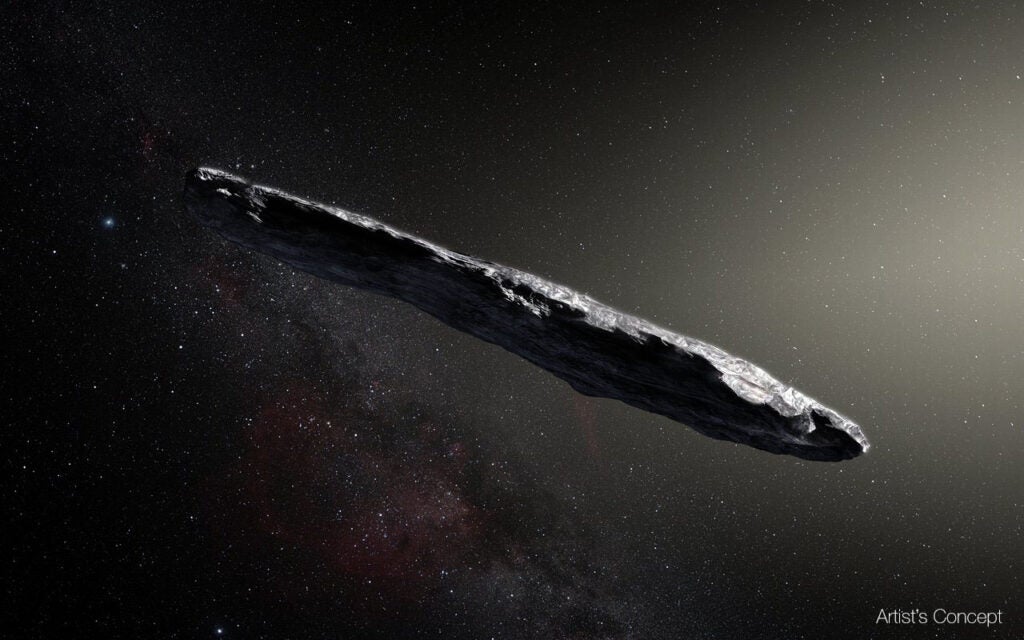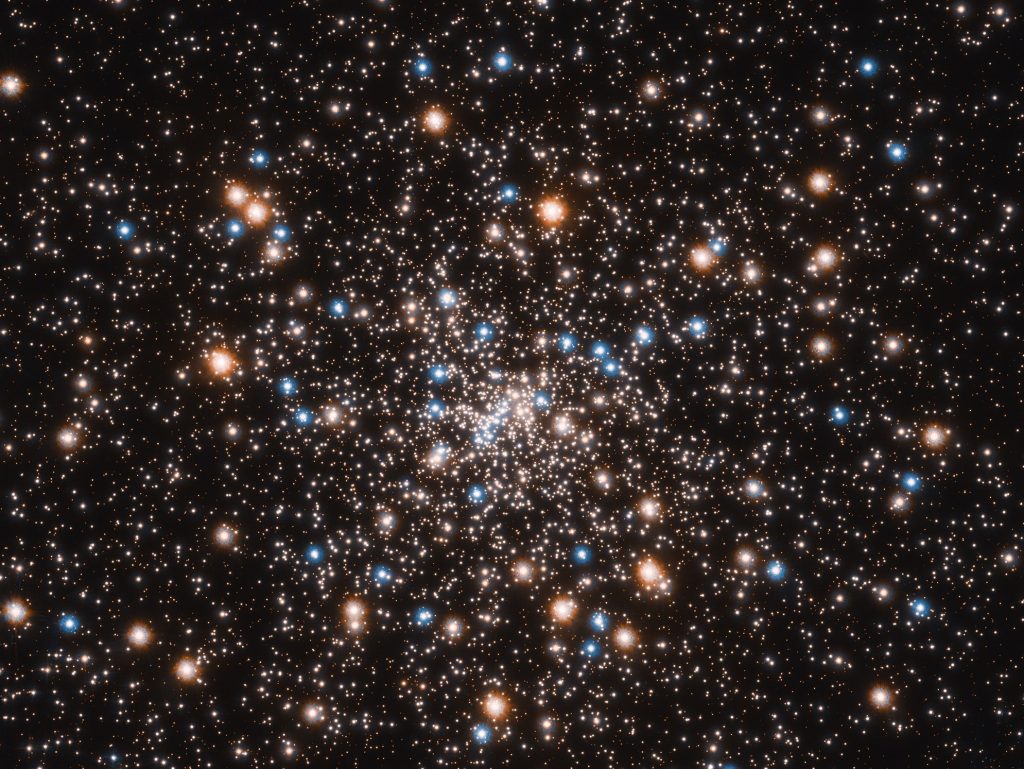Researchers working on Search for Extraterrestrial Intelligence (SETI) efforts hunt for the same thing that their predecessors sought for decades—a sign that life arose, as Carl Sagan would say, on another humdrum planet around another humdrum star and rose up into something technologically advanced.
It could happen any day. A strange radio signal. A weird, brief flash in the night sky. A curiously behaving star with no natural explanation.
It could be anything, so SETI researchers are casting a wide net, tracking down as many promising leads as they can. But one thing they’ve started to realize is that if a civilization from another world follows a similar path to our own, then we may be dealing with a whole different form of brainpower. Not a little green person, Vulcan, or strange organism we aren’t yet fathoming, but an artificial intelligence.
To understand why the first intelligence we meet might be artificial, we have to go back to early efforts to look for life around other stars. SETI researchers started listening to the cosmos on the assumption that aliens might begin radio transmissions as a first advanced technological step if they’re at all like us. There’s reason to believe that, like our own path, getting from the era of radio to the computing era is a small jump.
“By 1900 you had radio; by 1945 you had computers,” Seth Shostak, senior scientist at the SETI Institute, says. “It seems to me that’s a hard arc to avoid.”
And from there, it may just be a matter of getting those computers smaller and smaller as they get smarter and smarter. Automated processes learn to adapt on their own, and someday, rudimentary intelligence arrives, just as it has here.
“There’s currently an AI revolution, and we see artificial intelligence getting smarter and smarter by the day,” Susan Schneider, an associate professor of cognitive science and philosophy at the University of Connecticut who has written about the intersection of SETI and AI, says. “That suggests to me something similar may be going on at other points in the universe.”
So what will that actually look like from our perspective here on Earth?

Worlds of Algorithms
Artificial intelligence on Earth isn’t quite at the level where we need to be worried about it. Yet. While a series of artificial intelligence algorithms may govern the day to day world, whether they’re recommending Netflix shows or determining what shows up in your Facebook feed or even sorting through treasure troves of science data, it’s a stretch to say that a Matrix scenario where intelligent robots ensnare and enslave humanity is going to happen in the next 20 years.
But the initial development of AI was incredibly fast. The first experiments in artificial intelligence came not long after the first (or one of the first) digital computers, ENIAC, went online in 1946. By 1948, researchers were attempting to make Turing B-type machines, computers that could solve problems dynamically. By 1954, the first neural network, an artificial brain mimicking the human neuron structure and decision making process, was online. This could mean that in other civilizations—not just our own—AI comes shortly after digital computing, however primitive.
So why haven’t we heard from other civilizations yet? Sure, time and space are vast, and relatively speaking we just started looking. But there are other limitations to life as well. There’s an idea in SETI circles known as the Fermi Paradox: if there are technologically advanced alien civilizations out there, why haven’t we heard from them? One solution often proposed is the great filter.
The great filter is the idea that technological progress creates as many problems as it solves. As a society advances to a certain point, those threats can outweigh the benefits, resulting in the wholesale destruction of a civilization. It’s possible we’ve already been through one step toward the Great Filter; The first digital computer was built somewhere between 1939 and 1946—the same time period as the development of the first nuclear weapons.
Simply put, some civilizations, whether through global-scale climate change, nuclear war, or famine, may kill themselves before they can become truly advanced. Artificial intelligence has even been added onto the list of potential threats at times—the Skynet solution to the Fermi Paradox.
Our present day AI isn’t too sophisticated. It can do a really good job at pattern recognition and filtering, but that’s after a lot of training, and it currently doesn’t undergo Darwinian evolution. Unless its programmed to, it doesn’t reproduce, and it isn’t necessarily sentient—it’s more like an animal running on instinct rather than a fully self-aware autonomous entity.
In her writings on AI and SETI, Schneider says, “I pushed for agnosticism about machine consciousness. We just don’t have any clue if consciousness could be non-biological.”
But non-biological components could be added to conscious beings. Societies who DO survive the great filter may do so alongside the machines, Schneider says.
“I’m actually concerned that technological civilizations may not last long, but if they do, there’s a lot of reasons to believe they’ll be post-biological,” Schneider says. “They’ll enhance their brains towards synthetic intelligence.”
In other words … cyborg societies. And from techno-enhanced, you might start to get the sort of stuff of science fiction dreams—sentient robots. Maybe it’s computer-augmented beings uploading or replicating their consciousness, ala a few episodes of Black Mirror. Or maybe it’s AI that reached the singularity.
But as Shostak points out, planets are volatile, prone to eruptions and earthquakes and the effects of an aging star. “Machines aren’t necessarily going to stay on a planet,” he says. “Planets are dangerous for machines.”
Instead, they’ll likely do what we continually aspire to do, and head for the stars.

Points beyond
The popular image of SETI is, for many, Jodi Foster in Contact with a set of headphones at the Very Large Array in New Mexico catching a deliberate signal from some aliens at an outpost around the star Vega. But SETI researchers aren’t just listening for aliens, they’re looking for them too—scanning the skies for flashing light beacons, shadows crossing stars, or, in the next few decades, weird signals in atmospheres of planets outside our solar system.
“I try to keep a very open mind about what we’re looking for. When SETI succeeds it won’t be like science fiction where we find something like us,” Jason Wright, an associate professor at Penn State, says.
The first SETI detections, should they ever happen, may be hard to parse out, just like Tabby’s Star, the dust-dimmed star that at one point Wright and others considered a possible (but unlikely) alien megastructure candidate. If the first signal from an extraterrestrial civilization is like Contact, the signal may be designed to be captured. “If that’s true, then presumably it’ll have information about whoever sent the signal,” Wright says. But otherwise, Wright says, “When we finally do find something, we really won’t understand what we’re looking at.”
But given that compared to advanced civilizations our cosmic footprint may be small, it’s unlikely that anyone out there knows we’re here, so we’re much more likely to catch a passive, rather than active, kernel of information coming from the planet. There are still ways to tell what’s going on. One idea put forth in SETI literature is the idea that we could find aliens by their air pollution or, with even bigger telescopes, by the glint of artificial objects on the planet—like catching the spectra of a large, photovoltaic panel-like silicon structure meant to harvest a lot of energy from a star. “If you see a molecule that has to be synthetic, that does not arise in nature, then that’s pretty definitive,” Wright says.
Even then, we won’t necessarily know if the society we’re detecting is made up of organic or synthetic life. And since SETI efforts are only going off one data point—us—we really don’t know what an advanced machine intelligence might look like vs aliens with unfamiliar…everything. A radio signal will likely come from an alien machine, but that doesn’t tell us anything about the operator.
“There’s no particular SETI effort being made to find the machines because no one knows quite how to find that,” Shostak says.
Those machines could be alien technology that has advanced with some degree of artificial intelligence but that aren’t necessarily a sentient artificial intelligence. Maybe we could, instead, keep an eye out for something like an advanced alien space probe—a Voyager on steroids.

Probing questions
Last year, a cigar shaped hunk of rock passed through our solar system—but it only dropped by for a quick visit before bolting back out to parts unknown. Called ‘Oumuamua, it was the first confirmed interstellar asteroid, though recently published research suggests it may be a comet. As often happens with something weird, the question of aliens was at least briefly raised, if not taken entirely seriously.
‘Oumuamua was tumbling end over end, over and over again. While some people called it “Rama,” comparing it to an alien space probe in an Arthur C. Clarke novel, Wright says the tumbling probably indicated that it was all too natural. Comets and asteroids almost always spin, and ‘Oumuamua was definitely no exception. It definitely wasn’t a “Bracewell probe,” a type of hypothetical autonomous spacecraft designed with the express purpose of serving as an interplanetary interspecies liaison.
We know, generally, what’s a comet or asteroid by looking at it. We’ve identified most of the kinds of space rocks we expect to see. Something from elsewhere may have a different composition or color depending on where it’s from. Had we the chance to study ‘Oumuamua in more detail, we might have been able to compare it to the families of asteroids in our own solar system.
There are ways to tell whether or not an interstellar object is natural. Let’s say something coming through is a weird color. And not only is it a weird color, but it’s not spinning or tumbling, but staying in place. If it’s an alien probe, “you might expect to have attitude control, so it won’t be spinning. It won’t be tumbling,” Wright says.
Given the great distances between stars, its possible that an alien civilization may not send its own individuals here, but might send a robot our way. We’ve already done that five times over with Pioneers 10 and 11, Voyagers 1 and 2, and New Horizons, all of which are on trajectories out of the solar system, and the first four of which have messages from Earth ready for aliens to find.
In addition to an odd color and a steady path, there might be an actual lightbulb moment too. They “could have lights,” Wright says. It’s something proposed in a 2011 paper by Avi Loeb, a Harvard researcher. We could also look for a robotic probe entering and exiting certain areas of the solar system, or shifting it’s flightpath through our neighborhood.
“If it’s active then it’s probably going to change its orbit to see something,” Wright says.
The idea of finding something in our own solar system is strange and outlandish, but so, too, is just waiting for a radio signal or watching for big dimming events—which doesn’t mean something isn’t out there, however unlikely.
As our search continues (for now) to be fruitless, we’re left with one last ego-bruising answer to the Fermi Paradox: maybe we haven’t heard from the aliens because they don’t care that we’re here at all, if they’ve even bothered to notice us. And that may especially apply to robots.

What is this, a planet for ants?
Maybe the great filter comes. The augmented aliens survive. Then their AI offspring take the wheel. Do a bunch of apes with noisy radio signals and the odd act of nuclear warfare really appeal to them—are they even actively looking for something like us?
When it comes to that idea, Shostak says, “It’s not even dangerous (for the aliens). It’s uninteresting. It’s like me putting a sign up in my yard saying ‘attention all ants.’”
In this case, we’re the ants. We may not have the resources of an alien society, and if artificial intelligence is supposed to search for signs of far, far advanced technology, we’re barely a blip on their radar.
Schneider says, “Earth is actually a relatively young planet so some astrobiologists think if there are civilizations out there, they may be vastly more advanced than us.”
Sure, we got radio. Then we got computers. Then Moore’s Law turned digital computers into increasingly efficient machines, year-by-year. “Machines improved very quickly—much, much more quickly than Darwin,” Shostak says.
Meanwhile, the aliens from the older planets get more advanced. So does their AI. Maybe it becomes the most dominant lifeform on the planet. It takes over its planet, then its star. It sends itself out into the universe in general—or it’s content to stay home for whatever reason. It’s plentiful and abundant and highly advanced, and when it comes across Earth, it doesn’t see anything particularly special. An alien AI may be just a few thousand years ahead of us, technologically, but it may still be advanced enough to grow disinterested in finding ants.
“We might be like cats or goldfish compared to humans and they may not want to have anything to do with us,” Schneider says.
Our goldfish status could put us in a weird place. We may be just as likely to encounter biological life on a scale unimaginable to us right now, or we may make contact with their probes before we find them. We may find a semi-intelligent Bracewell beacon from afar, or one may swoop through our backyard, its AI trained to home in on the fingerprints of our civilization. We may find robots sent by the aliens, or we may find out robots are the aliens.
At a base level, its possible to imagine that our first meeting with intelligent life beyond Earth might not be with something living and breathing, but with a different kind of fellow explorer—who just might happen to be a machine.









